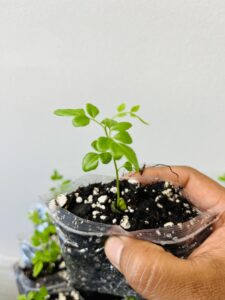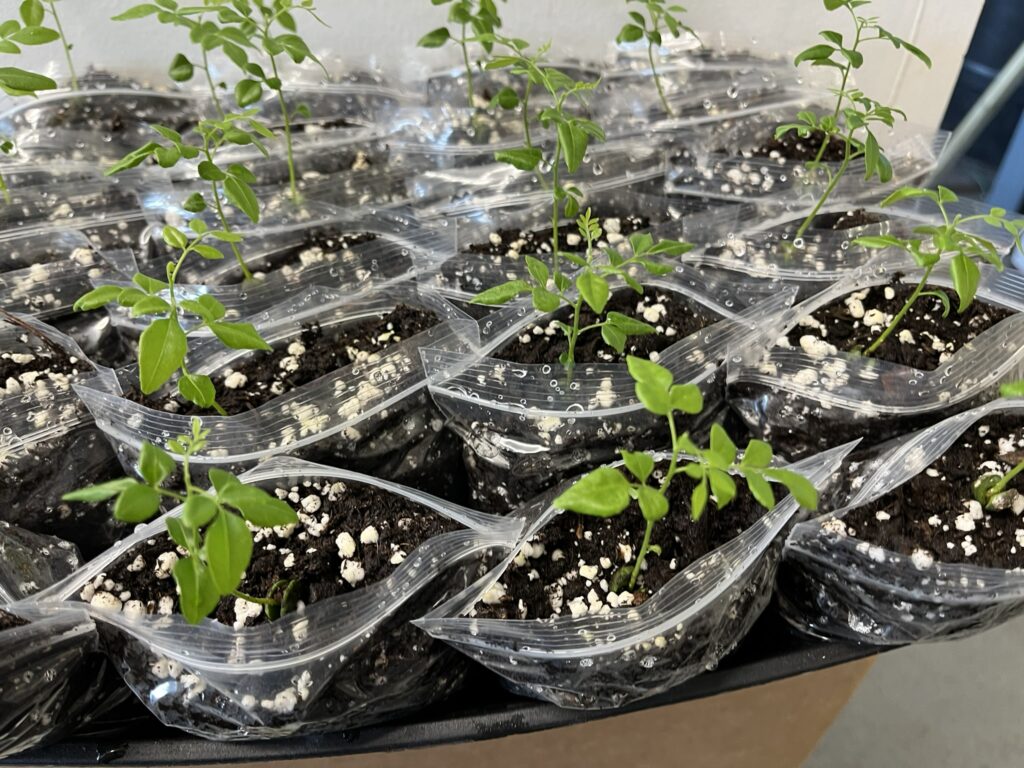How to Grow Curry Leaf Plants in the UK Climate: Your Comprehensive Guide
The curry leaf plant (Murraya koenigii) is a staple in South Indian and Southeast Asian cuisine, celebrated for its unique, citrusy aroma and vibrant flavour. While native to warmer, tropical regions, the good news is that with a little care and a few simple adjustments, you can successfully grow a curry leaf plant in the UK and enjoy a fresh supply of this fragrant herb right from your own home. This easy guide will walk you through everything you need to know, from selecting the right plant to providing the ideal conditions for a healthy, thriving specimen.
Selecting the Right Curry Leaf Plant for the UK
The journey to successful curry leaf gardening in the UK begins with a healthy, well-established plant. Starting from seeds can be difficult and slow, especially in a temperate climate. The most reliable method is to purchase a young, potted plant.
Look for a plant with green, unblemished leaves and a sturdy stem. A healthy root system is key, so make sure the plant is not root-bound in its pot. At Plants Paradise, we offer specially selected curry leaf plants that are robust and ready to thrive in a UK environment, ensuring you get the best possible start. Our plants are cultivated and shipped with care, arriving ready for you to begin your growing adventure.
Essential Growing Conditions for a Healthy Plant
Mastering curry leaf plant care in the UK means understanding its core needs and adapting them to our climate. The three most critical factors are light, watering, and temperature.
1. Sunlight Requirements
Curry leaf plants are sun-loving and require a significant amount of light to flourish. They will not tolerate low-light conditions for long.
- Ideal Placement: During the summer months, a south-facing window is the perfect spot. A conservatory or a greenhouse provides an excellent environment, offering bright, indirect sunlight throughout the day.
- Summer Outdoors: If you have a sheltered, sunny spot in your garden, you can move your plant outdoors once all risk of frost has passed (typically from late May to early September). This exposure to direct sunlight and fresh air can boost growth.
- Winter Solution: As the days shorten and sunlight becomes scarce in the autumn and winter, your plant will need help. Consider moving it to the brightest spot in your home. If natural light is insufficient, supplementing with a grow light can make all the difference. LED or fluorescent grow lights can provide the necessary intensity to prevent your plant from becoming weak and leggy.

2. Watering & Humidity
Finding the right balance with watering is crucial for curry leaf tips in the UK. They prefer consistently moist soil but are extremely susceptible to root rot if overwatered.
- How to Water: The best method is to feel the top inch of the soil with your finger. If it’s dry, it’s time to water. Water thoroughly until you see water draining from the bottom of the pot.
- Watering Frequency: In summer, you may need to water every 2-3 days, while in winter, this could reduce to once a week or even less, depending on the temperature of your home. Always adjust based on the soil’s moisture level.
- Humidity: These plants love humidity. You can mist the leaves with water every few days, or place the pot on a tray of pebbles filled with water.
3. Temperature and Frost Protection
This is perhaps the most important consideration for growing a curry leaf plant in the UK. Curry leaf plants are not frost-hardy and will die if exposed to freezing temperatures.
- Indoor Wintering: The key to year-round success is to bring your plant indoors well before the first signs of cold weather. Move your plant inside once nighttime temperatures consistently drop below 10°C (50°F).
- Ideal Temperature: The plant thrives in temperatures between 20°C and 35°C, but it can tolerate cooler indoor temperatures as long as it’s kept away from cold drafts and windows during the night.
Soil, Potting & Feeding
A successful plant starts with the right foundation.
- Soil: Use a well-draining soil mix. A standard potting compost mixed with perlite or sand will create the loose, airy structure that curry leaf roots need to breathe.
- Pot: Ensure your pot has plenty of drainage holes. A terracotta pot is an excellent choice as it is porous and helps to wick away excess moisture, reducing the risk of waterlogged soil.
- Feeding: During the active growing season (spring and summer), feed your plant with a balanced, liquid fertiliser every 2-4 weeks. Stop feeding in autumn and winter when the plant’s growth slows down.
Pruning and Harvesting for a Bushier Plant
Regular harvesting and light pruning are essential for a healthy, bushy plant.
- How to Harvest: To harvest, simply snip off a small branch with a few leaves. This encourages new growth and keeps the plant from becoming leggy. Harvest sparingly from a young plant.
- Pruning: In spring, you can prune back longer branches to encourage a denser shape. Don’t be afraid to snip off any dry or yellowing leaves.
Benefits of Growing Your Own
Having a curry leaf plant at home means you can enjoy the unparalleled freshness and fragrance of the leaves in your cooking, elevating your dishes to a new level. The leaves lose their potency and aroma quickly after being picked, so store-bought leaves simply can’t compare. Plus, it’s incredibly rewarding to grow your own.
Get Started Today
Are you ready to begin your journey to cultivate fresh curry leaves at home?
- Shop Now: Visit https://plantsparadise.co.uk/product/curry-leaf-plant/ to find the perfect curry leaf plant for your home.
- Join Our Community: For more gardening tips, growing advice, and a community of fellow plant lovers, connect with us on our Facebook page and YouTube channel. We’re here to help you every step of the way.
With the right care and a little bit of attention to our curry leaf tips UK, your plant will thrive, providing you with a continuous harvest of this incredible herb. Happy gardening!


